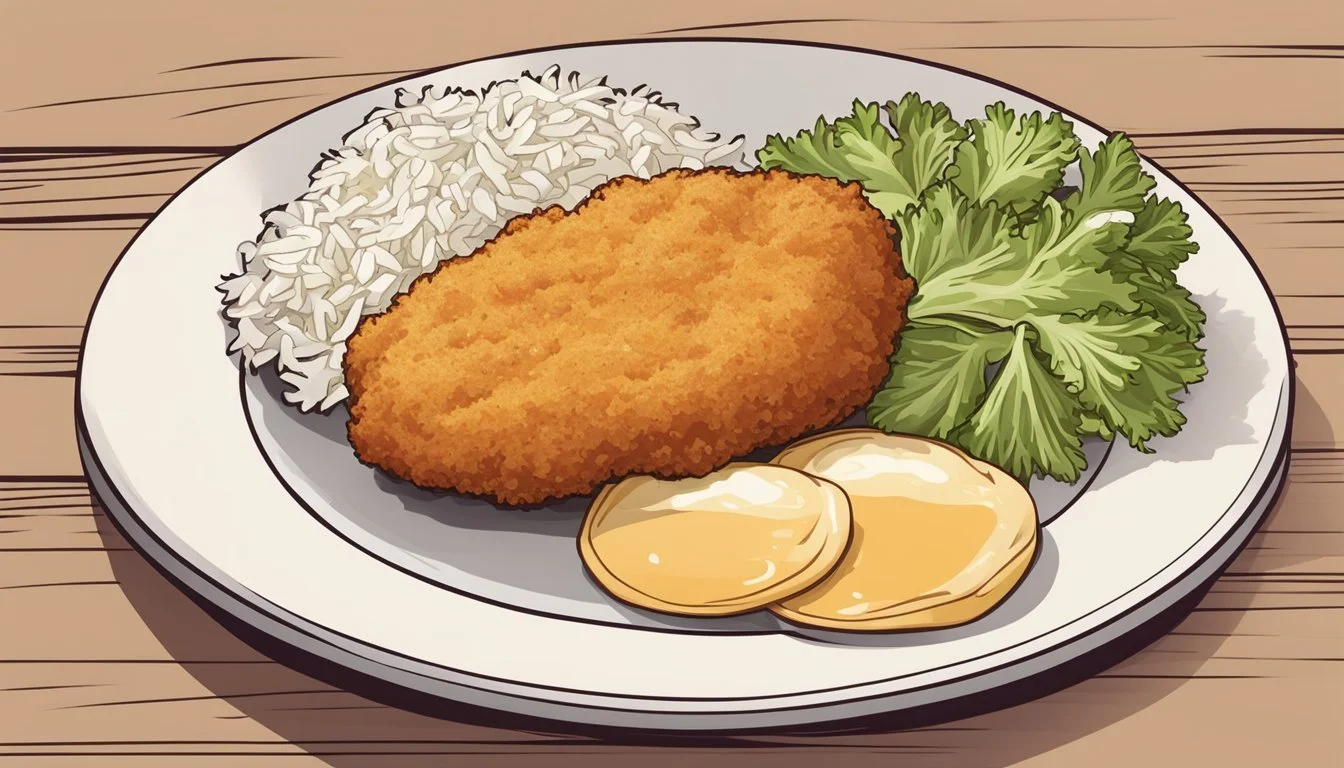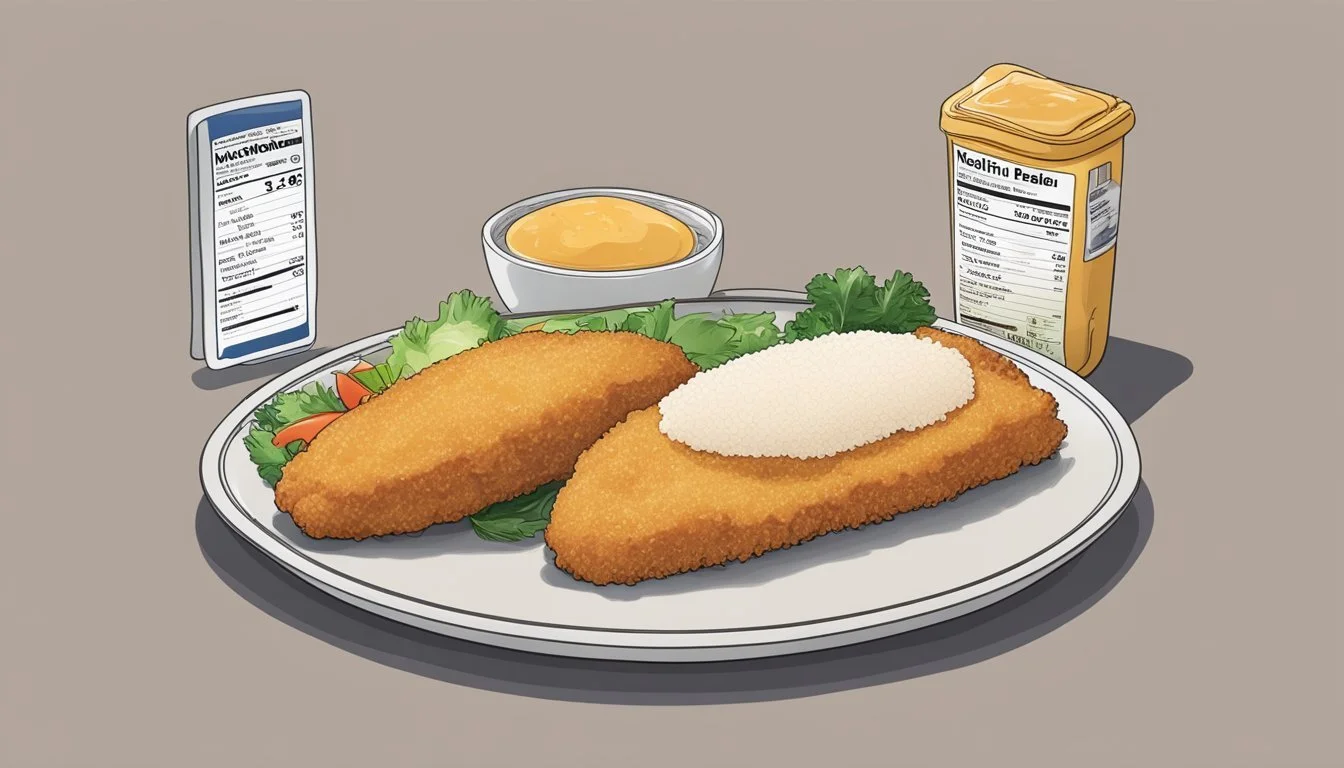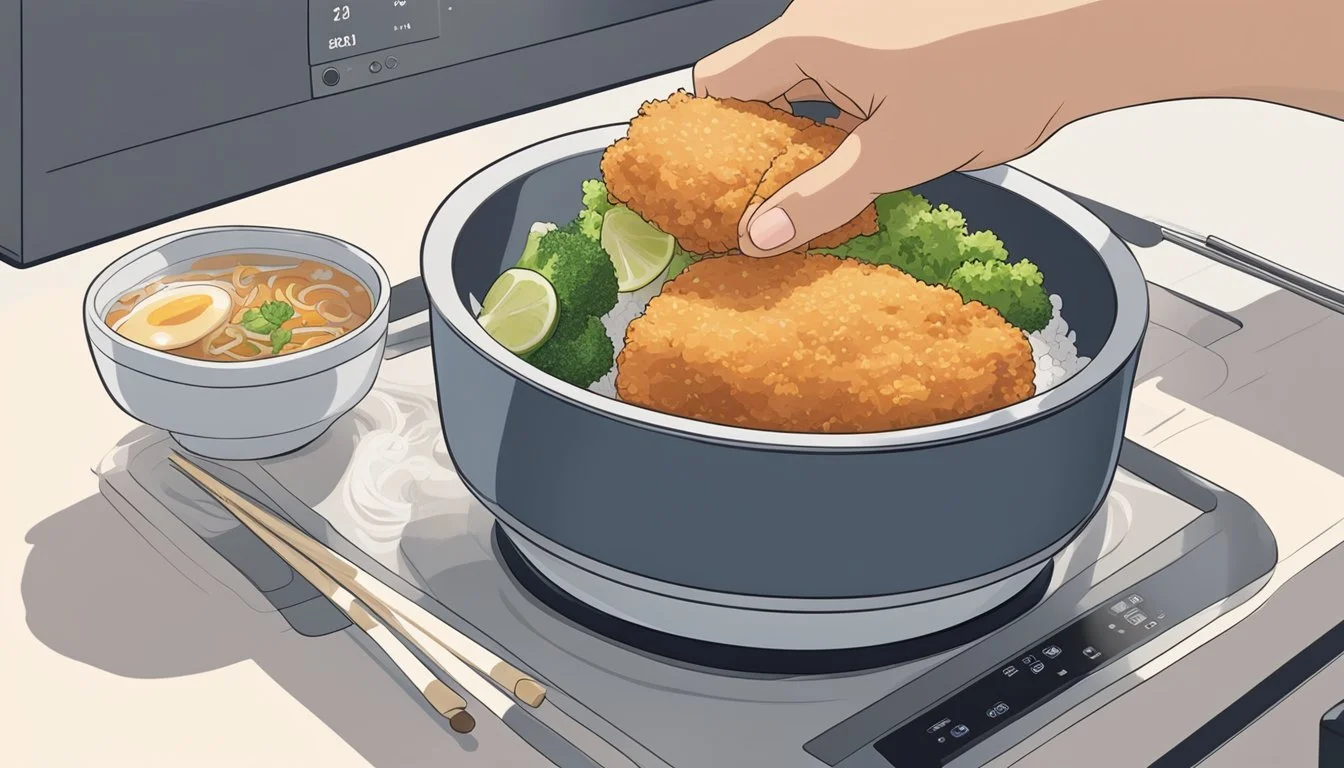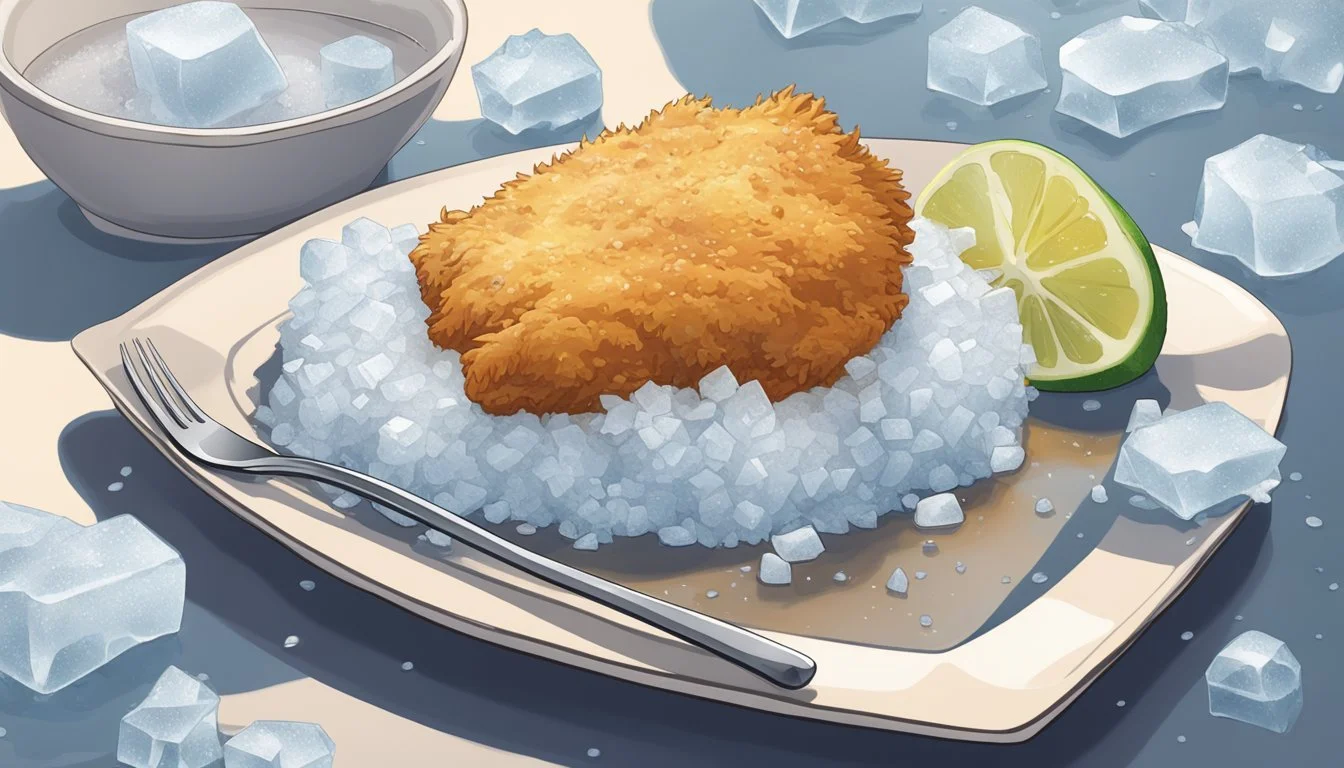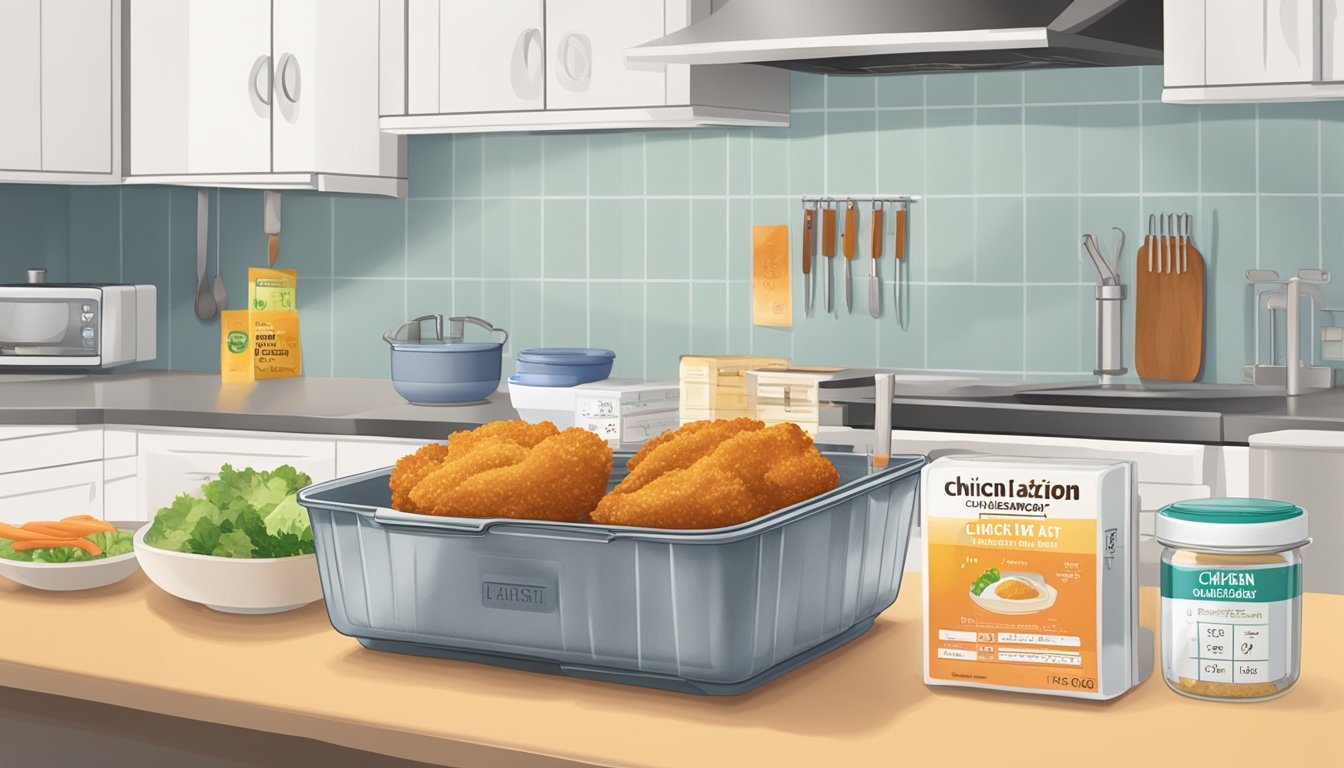How Long Does Chicken Katsu Last?
Storage Tips and Shelf Life Explained
Chicken katsu, a beloved Japanese dish featuring breaded and fried chicken cutlets, has become a staple in many households around the world. Whether enjoyed fresh out of the fryer or stored for later use, knowing how long it lasts is crucial for maintaining its quality and safety. Properly stored, chicken katsu can remain fresh in the refrigerator for up to 3-4 days and last in the freezer for two to three months.
The storage method significantly affects the shelf life of chicken katsu. Wrapping the cooked cutlets tightly in plastic wrap or placing them in an airtight container helps preserve their texture and flavor. Reheating techniques also matter—using an oven or toaster oven is recommended to restore its crispiness, while microwaving may result in a soggy exterior.
Understanding how to extend the life of chicken katsu ensures that this delicious dish can be enjoyed beyond the initial meal. Such knowledge not only helps reduce food waste but also provides convenience for busy days when a quick, homemade meal is desired.
What Is Chicken Katsu?
Chicken Katsu is a popular Japanese dish that features breaded and fried chicken cutlets.
Typically made with boneless chicken breasts or thighs, the meat is pounded to an even thickness, seasoned with salt and pepper, and then coated with all-purpose flour, beaten eggs, and panko breadcrumbs.
This preparation results in a golden brown, crispy exterior while keeping the inside juicy.
Chicken Katsu is often served with shredded cabbage and a tangy tonkatsu sauce. This sauce is a special condiment similar to Worcestershire sauce, adding a rich, savory flavor to the dish.
Ingredients:
Chicken: Boneless breasts or thighs
Flour: All-purpose
Eggs: Beaten
Panko: Japanese breadcrumbs
Salt and Pepper: For seasoning
The traditional method involves frying the breaded cutlets in hot vegetable oil until crispy. These cutlets can then be enjoyed as a main course, in sandwiches, or atop rice bowls.
Originating from the Japanese dish Tonktatsu, which uses pork cutlets, chicken katsu has become a beloved variation worldwide, admired for its deliciously crunchy texture and versatile serving options.
Nutritional Information and Health Considerations
Chicken Katsu, a Japanese breaded and fried chicken cutlet, offers various nutritional values depending on the preparation method and ingredients used.
A typical serving of Chicken Katsu contains approximately 330 calories. The exact number could vary based on factors like recipe specifics and portion sizes.
Key Nutritional Values per Serving:
Calories: 330 kcal
Fat: 20g
Protein: 25g
Carbohydrates: 20g
The breading provides most of the carbohydrates. Using whole wheat breadcrumbs can increase fiber content.
Oils and Fats: Chicken Katsu is usually fried in vegetable oil, adding to its fat content. Opting for healthier oils, such as olive or canola oil, can make it a bit healthier.
Protein Source: Being made from chicken breast, it is a good source of lean protein. This makes it beneficial for muscle maintenance and repair.
Freshness and Food Safety
When storing Chicken Katsu, keeping it fresh and safe to eat is crucial. In the refrigerator, it can last up to four days if stored in an airtight container or wrapped tightly. For longer storage, freeze it for up to two months.
Food Safety Tips:
Always ensure the chicken reaches an internal temperature of 165°F (74°C) when reheating.
Cool leftovers quickly and store them within two hours of cooking.
Considering these nutritional and safety aspects helps maintain the quality and healthfulness of Chicken Katsu.
Preparing Chicken Katsu
Chicken katsu is a popular Japanese dish made from breaded and fried chicken cutlets.
On a cutting board, use a sharp knife to butterfly the chicken breasts.
Pound them to an even thickness of about ¼ to ½ inch.
Season both sides with kosher salt and black pepper.
Set up a breading station with three shallow bowls.
In the first bowl, add all-purpose flour.
In the second bowl, whisk together one or two eggs.
In the third bowl, place panko breadcrumbs.
Coat each piece of chicken in flour, shaking off any excess.
Dip the chicken into the egg mixture.
Then press it into the panko breadcrumbs, ensuring it’s well coated.
For frying, use a heavy-bottomed skillet and heat about 1½ inches of vegetable oil (canola or peanut oil).
The optimal oil temperature is around 350°F (175°C).
Carefully place the breaded chicken into the hot oil.
Fry for 3 to 4 minutes on each side, until golden brown.
Transfer the chicken katsu to a paper towel-lined plate to drain the excess oil.
Alternatively, chicken katsu can also be cooked in an air fryer.
Preheat the air fryer to 400°F (200°C) and cook the breaded chicken for about 10-12 minutes, flipping halfway through.
Serve the chicken katsu hot.
Enjoy it with tonkatsu sauce and a side of shredded cabbage for an authentic touch.
Cooking Methods and Techniques
The method of cooking chicken katsu significantly impacts its texture, flavor, and shelf life.
Frying Techniques
Fried Chicken: Traditional chicken katsu is deep-fried until golden brown. Use an instant-read thermometer to check that the oil reaches 350°F (175°C). Fry the chicken until it achieves a crispy crust and reaches an internal temperature of 165°F (75°C).
Air Fryer: For a healthier option, use an air fryer. Preheat to 360°F (180°C), and cook the breaded chicken for about 15-20 minutes, flipping halfway through.
Baking: Baking the chicken is another alternative. Preheat the oven to 400°F (200°C). Place the breaded chicken on a wire rack over a baking sheet. Bake for 20-25 minutes until golden brown and crispy.
Bread Coating
Use a standard breading method: coat the chicken in flour, egg, and panko breadcrumbs. This ensures an even, crispy crust.
Cooking Tips
Season the flour with salt, pepper, and garlic powder.
Ensure the chicken is pounded to an even thickness to cook evenly.
Use a wire rack to cool the fried chicken, keeping it crispy.
Reheating
Maintain Crispiness: To reheat, avoid microwaving, which makes the breading soggy. Instead, use an oven or air fryer at 350°F (175°C) for about 10 minutes.
These methods and tips keep chicken katsu delicious and crispy, enhancing its storage life whether refrigerated or frozen.
Serving Suggestions
Chicken katsu pairs well with a variety of sides and sauces to create a balanced and delightful meal.
Steamed Rice and Katsu Sauce: Serve the crispy chicken katsu over a bed of steamed rice. Drizzle with katsu sauce for an authentic touch.
Tonkatsu: A traditional option is tonkatsu, which is often enjoyed with shredded cabbage and a generous serving of tonkatsu sauce.
Japanese Coleslaw: Create a refreshing contrast by adding a side of Japanese coleslaw, with ingredients such as fresh ginger, garlic, and a splash of mirin for extra flavor.
Ramen: Chicken katsu is also a popular topping for ramen. It adds a hearty, crispy element that complements the savory broth and noodles.
Chicken Katsu Sando: For a more casual serving suggestion, consider making a chicken katsu sando. This sandwich often includes katsu, cabbage, and a spread of tonkatsu sauce on soft, crustless bread.
These options can be mixed and matched to suit personal taste, ensuring a versatile and enjoyable dining experience.
Proper Storage Techniques
Using proper storage techniques ensures chicken katsu maintains its quality and safety. Bacterial growth can be minimized by adhering to specific guidelines.
Refrigerator Storage
Shelf Life: Chicken katsu can be stored in the refrigerator for up to four days.
Preparation: Wrap the chicken katsu tightly in plastic wrap or place it in an airtight container to prevent moisture loss.
Temperature: Maintain the refrigerator at or below 40°F (4°C) to prevent spoilage.
Freezing Chicken Katsu
Shelf Life: Frozen chicken katsu can last up to two months.
Preparation: Before freezing, wrap the chicken katsu tightly in plastic wrap followed by aluminum foil. Alternatively, place it in a vacuum-sealed or airtight container.
Protection: To avoid freezer burn, ensure the chicken is properly wrapped and excess air is removed from the packaging.
Food Safety Tips
Avoid Cross-Contamination: Use clean utensils and surfaces when handling chicken katsu.
Labeling: Always label the storage date on the packaging to keep track of shelf life.
Reheating: When reheating, ensure the chicken katsu reaches an internal temperature of 165°F (75°C) to ensure food safety.
By following these methods, you can enjoy chicken katsu without compromising on taste or safety.
Identifying and Preventing Spoilage
Chicken katsu should be stored properly to prevent spoilage and ensure food safety. Bacterial growth is a common cause of spoilage and can be minimized by keeping cooked chicken katsu in the refrigerator or freezer. Here are some important points to keep in mind:
Shelf Life:
Refrigerator: Up to 4 days
Freezer: Up to 2 months
Signs of Spoilage:
Discoloration: Look for any changes in color, especially green or gray patches.
Odor: A sour or off smell indicates spoilage.
Texture: Slimy or sticky texture is a sign of bacterial growth.
Prevention Tips:
Use airtight containers to store chicken katsu.
Ensure the refrigerator is set at or below 40°F (4°C).
Label containers with dates to keep track of freshness.
Reheat leftovers to an internal temperature of 165°F (74°C).
Bacteria and Food Safety:
Quickly refrigerate chicken katsu after cooking to slow bacterial growth.
Avoid leaving cooked chicken at room temperature for more than 2 hours.
Keep the freezer at 0°F (-18°C) to maintain the quality and safety of the food.
Following these guidelines can help prevent spoilage and ensure that chicken katsu remains safe and enjoyable to eat.
Reheating and Serving Leftovers
Reheating chicken katsu can help preserve its crispy crust if done correctly. Air fryers are particularly effective for this. Preheat the air fryer to 350°F (175°C), then place the chicken katsu in a single layer. Heat for 5-7 minutes or until warmed through.
If using an oven, preheat to 350°F (175°C) and place the chicken katsu on a baking sheet. Heat for 10-15 minutes. Microwave reheating is not recommended as it can make the chicken soggy.
For those who prefer stovetop methods, reheat by lightly frying the chicken in a pan with a small amount of oil for a few minutes on each side. This can help maintain the crispy texture.
When serving leftover chicken katsu, it can be enjoyed in various forms. Consider making a chicken katsu sando by placing the reheated katsu between slices of white bread with a little Worcestershire sauce. Another option is to serve it with Japanese curry for a comforting dish.
For those with a sweet tooth, drizzle a mix of ketchup and sugar over the reheated katsu. This creates a unique flavor contrast.
Freezing chicken katsu is also a good way to extend its shelf life. To reheat, allow it to thaw in the refrigerator and then follow one of the reheating methods mentioned above.
By using these techniques, chicken katsu can be reheated multiple times while keeping its delightful texture and flavor intact.
Freezing and Thawing Process
When freezing chicken katsu, proper packaging is crucial. Using airtight containers or heavy-duty freezer bags can help prevent freezer burn and retain the moisture of the chicken. To maximize freshness, squeeze out as much air as possible before sealing the container or bag.
Frozen chicken katsu can be stored in the freezer for up to three months without significant loss of quality. Labeling the containers with the date will help keep track of storage time.
Thawing frozen chicken katsu requires careful planning. The best method for thawing is to transfer the chicken katsu to the refrigerator and let it thaw overnight. This ensures a gradual temperature change, reducing the risk of harmful bacteria growth.
For faster thawing, placing the sealed chicken katsu in a bowl of cold water can also be effective. Change the water every 30 minutes, and the chicken should thaw within a few hours.
Once thawed, reheating can be done in several ways to restore its crispiness and flavor. Preheat the oven to 350°F (175°C), place the thawed chicken katsu on a baking sheet, and bake for 10-15 minutes. Alternatively, use an air fryer set to 350°F (175°C) and cook for 5-7 minutes.
Refrigerated thawed chicken katsu should be consumed within 1-2 days to ensure safety and the best taste. It's advised to avoid refreezing thawed chicken katsu to maintain quality and food safety.
Health and Safety Measures
When storing chicken katsu, proper food safety practices are critical to ensure it remains safe to eat.
Chicken katsu should be cooled and refrigerated within two hours of cooking to prevent bacterial growth. The refrigerator should be set to a temperature of 40°F (4°C) or lower.
For optimal freshness, store chicken katsu in an airtight container or wrap it tightly in plastic wrap.
Signs of Spoilage
To determine if chicken katsu has spoiled, check for the following:
Discoloration: Any change in color, especially a gray or greenish hue, indicates spoilage.
Off Odor: A sour or unpleasant smell is a common sign of bacterial growth.
Texture Changes: If the texture becomes slimy or sticky, it is likely spoiled.
Shelf Life
Stored properly in a refrigerator, chicken katsu can last up to four days. In the freezer, it can last for up to two months.
Reheating
When reheating, ensure the internal temperature reaches 165°F (74°C) to kill any bacteria. Use a preheated oven, air fryer, or microwave to reheat and ensure even heating.
Avoiding Bacterial Growth
Ensure hands, utensils, and surfaces are clean. Avoid cross-contamination by using separate cutting boards for raw and cooked foods.


